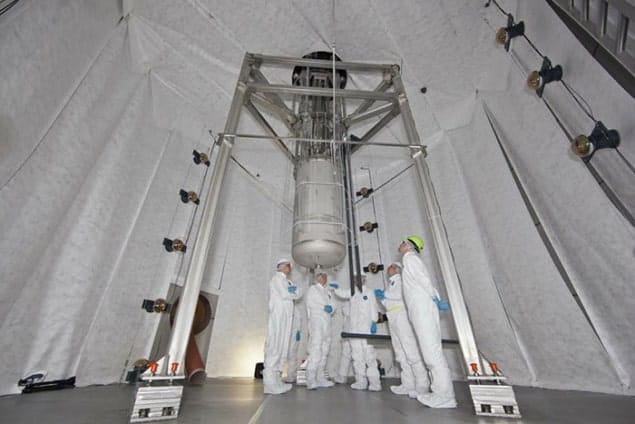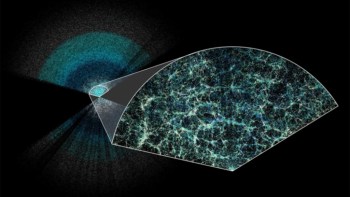
The Large Underground Xenon (LUX) collaboration has set new constraints on hypothetical dark-matter particles called WIMPs – weakly interacting massive particles. The LUX experiment is a dark-matter detector at the Sandford Underground Research Facility in the US. Buried 1500 m under radiation-shielding rock, it consists of a 2 m-tall titanium tank filled with 370 kg of liquid xenon cooled to –108 °C.
The detector relies upon the assumption that WIMPs should occasionally collide with the xenon atoms. If this occurs, the recoiling atom will create light and some free electrons. The electrons are accelerated by an electric field such that they create more light when they reach a layer of xenon gas at the top of the tank. Light signals from the collision point and the top of the tank are collected by extremely sensitive detectors and the energy of the collision can be deduced from the brightness. Requiring two signals from each event makes it easier to discriminate against light created by background radiation.
Two runs
The experiment has undergone two data runs searching for WIMPs – one for three months in 2013 and another between October 2014 and May 2016. Neither run saw evidence of WIMPs.
However, the two null results have allowed researchers to set a new upper limit on the spin-dependent WIMP–nucleon elastic cross-sections. The value for proton collisions is 5 × 10–40 cm2, while for WIMP–neutron interactions the cross-section is 1.6 × 10–41 cm2 – the most sensitive constraint to date.
The result, presented in Physical Review Letters, agrees with recent findings from the PICO-60 detector in Canada, which have also now been published in Physical Review Letters.



